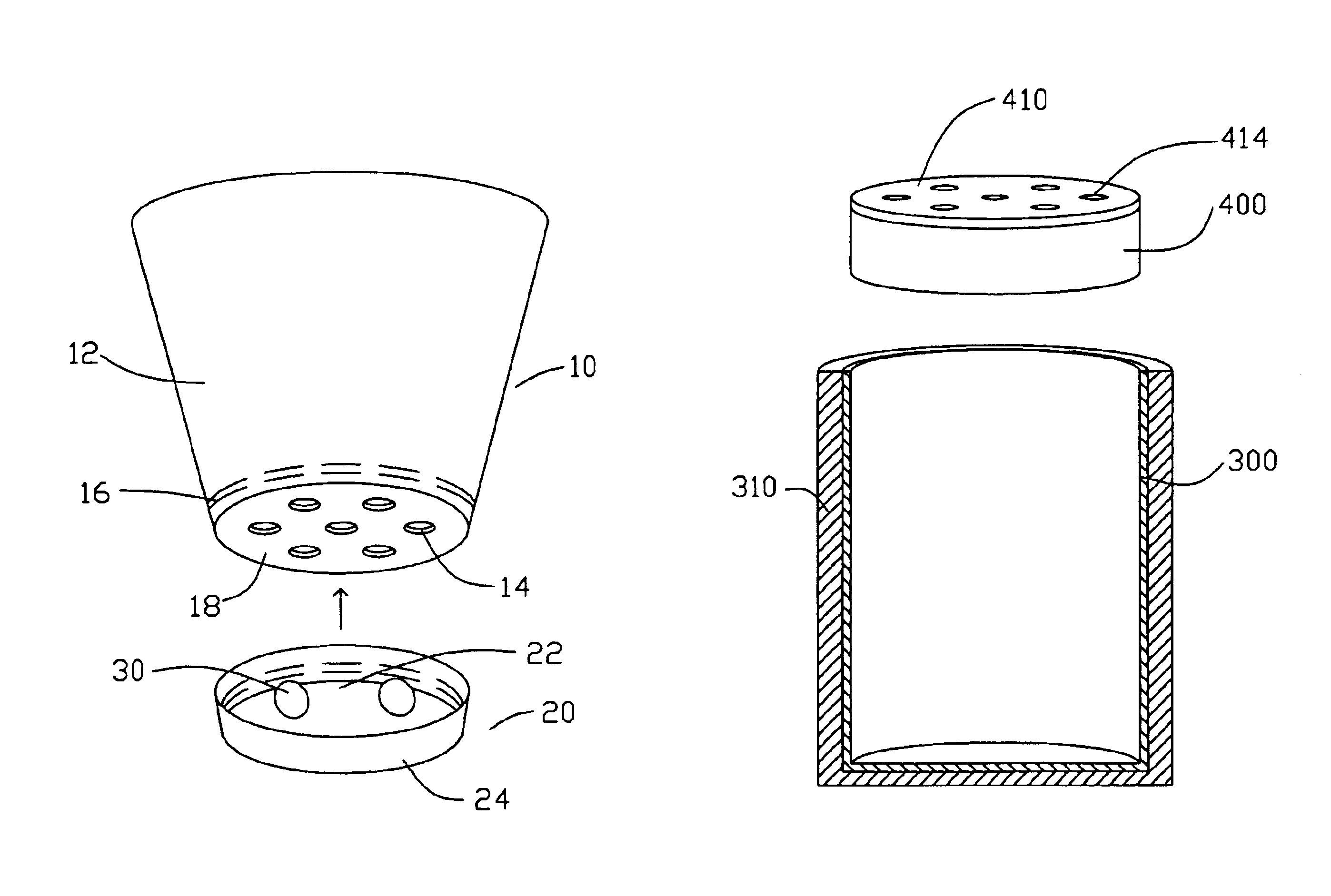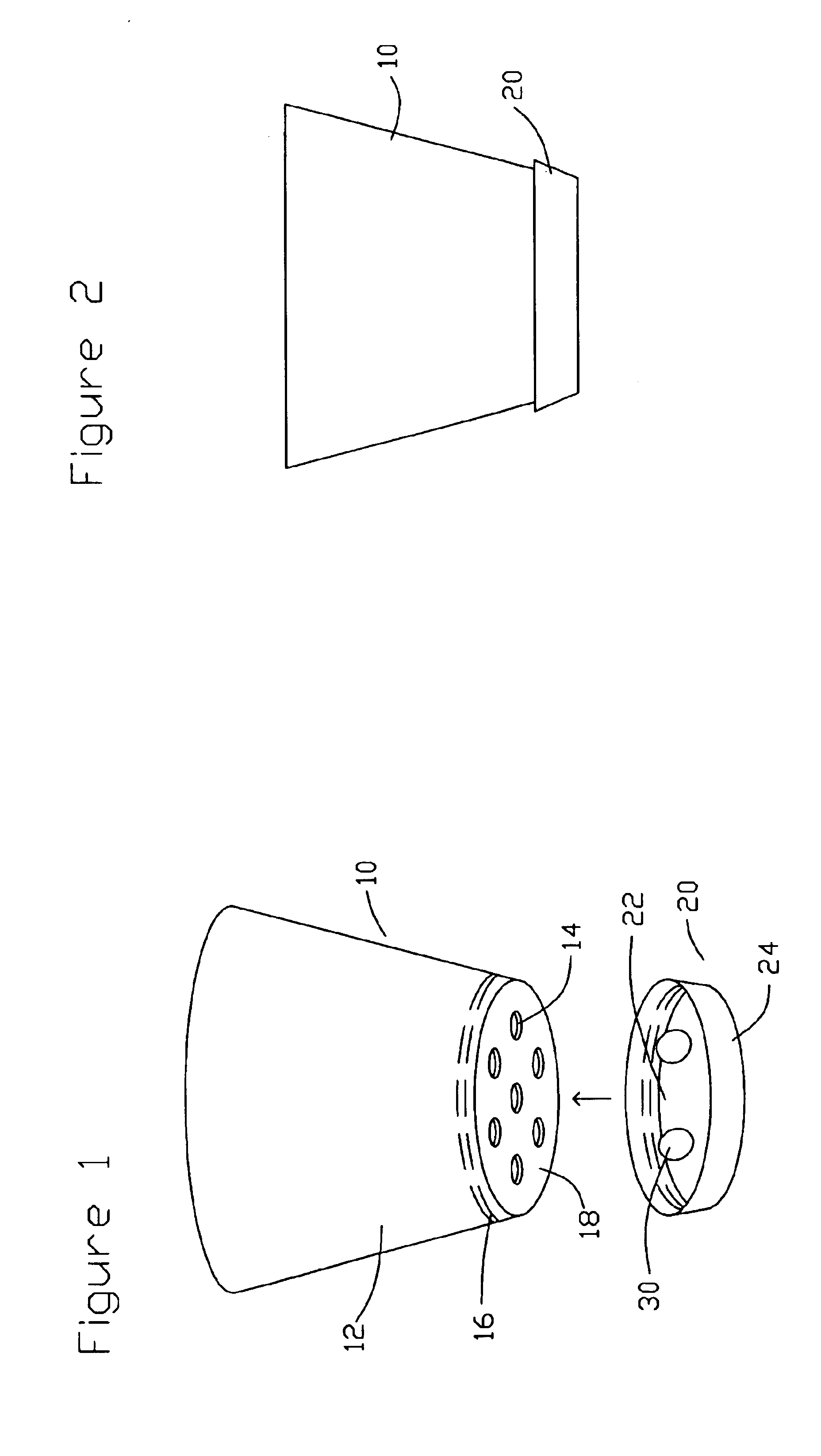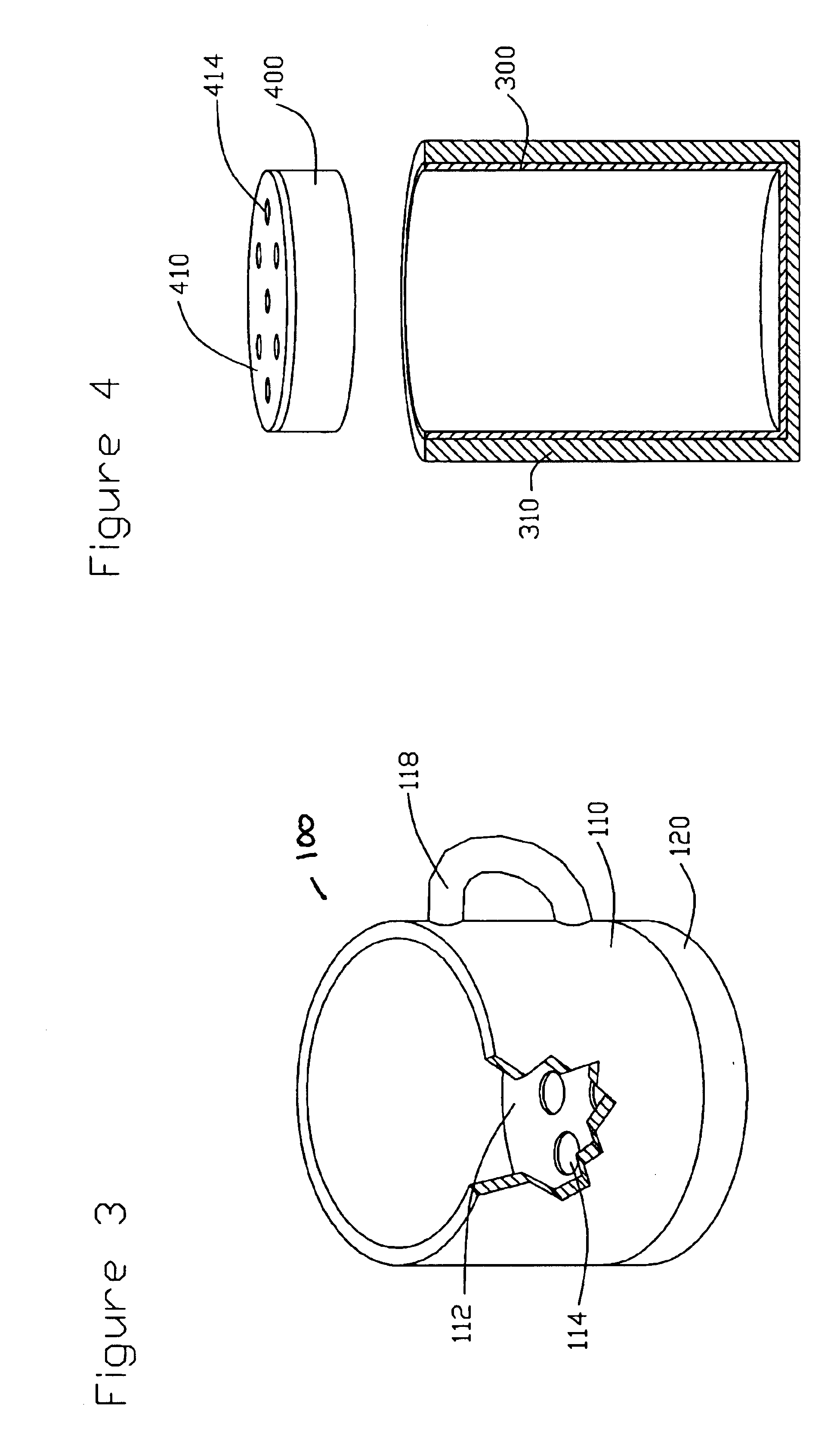Dry ice drinking vessel
a drinking vessel and dry ice technology, applied in the field of dry ice drinking vessels, can solve the problems of not being able to see dry ice, only practical, and beginning to warm up, and achieve the effect of safe and convenient individual servings
- Summary
- Abstract
- Description
- Claims
- Application Information
AI Technical Summary
Benefits of technology
Problems solved by technology
Method used
Image
Examples
Embodiment Construction
FIG. 1 shows an exploded view of the drinking vessel as it would appear when being assembled by a user. The vessel (10) is in the form of a small drinking container such as might be used in drinking alcoholic “shots”. The upper portion of the glass (12) includes a bottom surface (18) with holes (14). The upper portion (12) also includes structure such as threads (16) that will allow for the bottom portion (20) to be attached. The embodiment of FIG. 1 shows threads (16) as the means of attachment. The bottom portion (20) includes a bottom (22). and a cylindrical side wall (24) that is also threaded. Dry ice pellets (30) are shown in the bottom portion (20). Once threaded in place there is a space between the bottom (18) of the upper portion (12) and the bottom (22) of the lower portion (20) and that space holds the dry ice pellets (30).
In use the dry ice pellets (30) are placed in the bottom portion (20) and the bottom portion is threaded on to the top portion (12). An individual ser...
PUM
 Login to View More
Login to View More Abstract
Description
Claims
Application Information
 Login to View More
Login to View More - R&D
- Intellectual Property
- Life Sciences
- Materials
- Tech Scout
- Unparalleled Data Quality
- Higher Quality Content
- 60% Fewer Hallucinations
Browse by: Latest US Patents, China's latest patents, Technical Efficacy Thesaurus, Application Domain, Technology Topic, Popular Technical Reports.
© 2025 PatSnap. All rights reserved.Legal|Privacy policy|Modern Slavery Act Transparency Statement|Sitemap|About US| Contact US: help@patsnap.com



